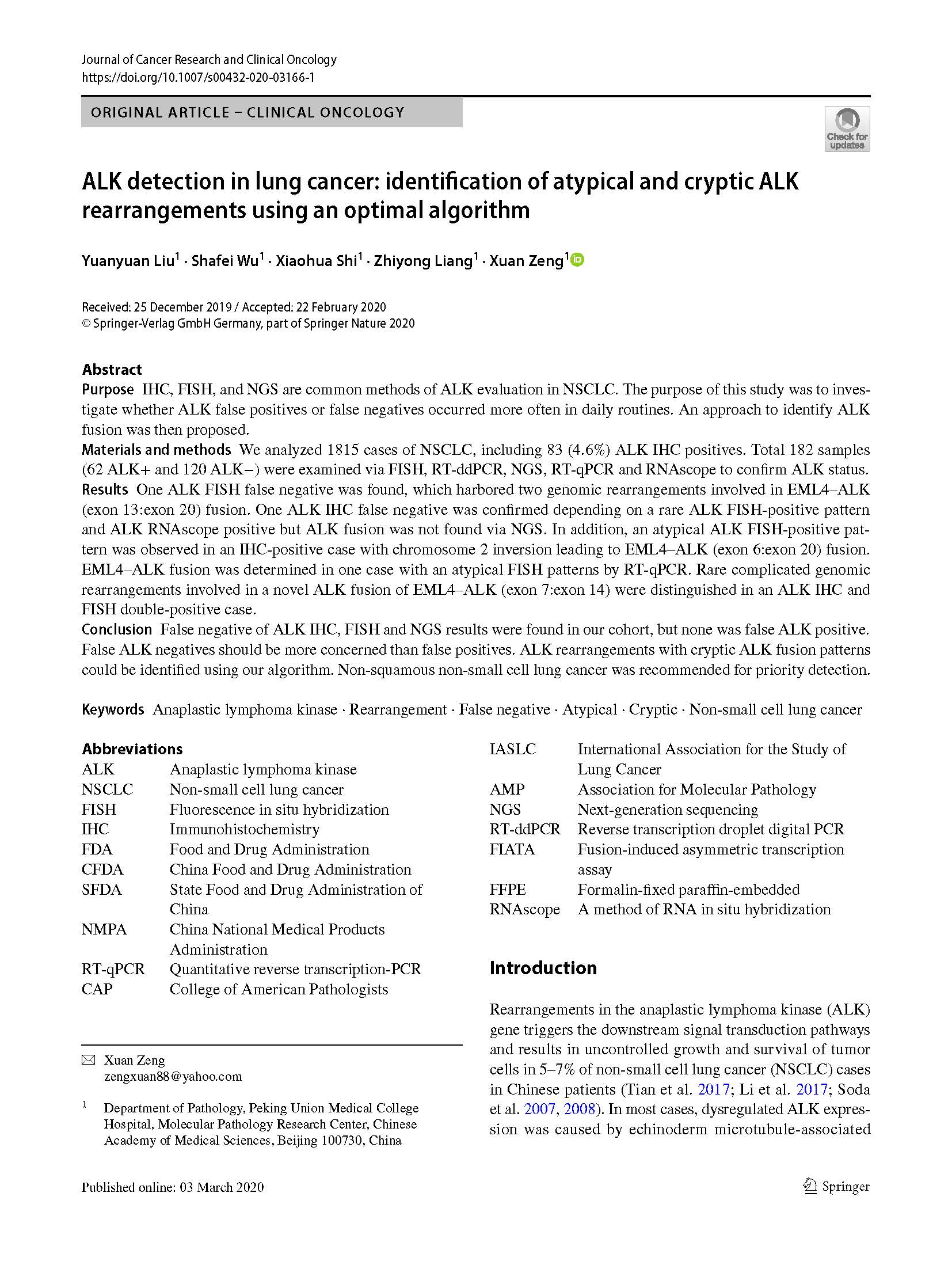ALK detection in lung cancer: identification of atypical and cryptic ALK rearrangements using an optimal algorithm
release date:2020-02-22

Purpose IHC, FISH, and NGS are common methods of ALK evaluation in NSCLC. The purpose of this study was to inves-tigate whether ALK false positives or false negatives occurred more often in daily routines. An approach to identify ALK fusion was then proposed.
Materials and methods We analyzed 1815 cases of NSCLC, including 83 (4.6%) ALK IHC positives. Total 182 samples (62 ALK+ and 120 ALK−) were examined via FISH, RT-ddPCR, NGS, RT-qPCR and RNAscope to confirm ALK status. Results One ALK FISH false negative was found, which harbored two genomic rearrangements involved in EML4–ALK (exon 13:exon 20) fusion. One ALK IHC false negative was confirmed depending on a rare ALK FISH-positive pattern and ALK RNAscope positive but ALK fusion was not found via NGS. In addition, an atypical ALK FISH-positive pat-tern was observed in an IHC-positive case with chromosome 2 inversion leading to EML4–ALK (exon 6:exon 20) fusion. EML4–ALK fusion was determined in one case with an atypical FISH patterns by RT-qPCR. Rare complicated genomic rearrangements involved in a novel ALK fusion of EML4–ALK (exon 7:exon 14) were distinguished in an ALK IHC and FISH double-positive case.
Conclusion False negative of ALK IHC, FISH and NGS results were found in our cohort, but none was false ALK positive. False ALK negatives should be more concerned than false positives. ALK rearrangements with cryptic ALK fusion patterns could be identified using our algorithm. Non-squamous non-small cell lung cancer was recommended for priority detection.
Keywords Anaplastic lymphoma kinase · Rearrangement · False negative · Atypical · Cryptic · Non-small cell lung cancer
See all: https://doi.org/10.1007/s00432-020-03166-1
 Purpose IHC, FISH, and NGS are common methods of ALK evaluation in NSCLC. The purpose of this study was to inves-tigate whether ALK false positives or false negatives occurred more often in daily routines. An approach to identify ALK fusion was then proposed.
Purpose IHC, FISH, and NGS are common methods of ALK evaluation in NSCLC. The purpose of this study was to inves-tigate whether ALK false positives or false negatives occurred more often in daily routines. An approach to identify ALK fusion was then proposed.